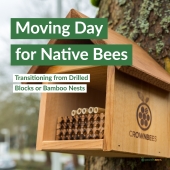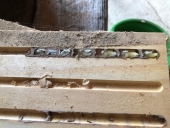












Olivia Helmer wrote:are you certain there is no naturally occurring clay near you?
you can order clay for pottery from places like dickblick http://www.dickblick.com/categories/firingclays/
I don't know if that sort will work though? i imagine ordering it in powder form will be much cheaper but if you do that wear a dust mask when you mix it with water. you don't want to breath that in. perhaps you could find a creek or river near you with clay and bring some to your bees from there?





 1
1
















Steven Feil wrote:EVERYWHERE I have lived "out West" has been a clay pit. Age of mountains has nothing to do with it.





Jordan Struck wrote:Can I set out craft store clay for the bees? Where else is clay available? I need to purchase some but don't know where to look or what will work. I'm from a small town.
















 3
3








Invasive plants are Earth's way of insisting we notice her medicines. Stephen Herrod Buhner
Everyone learns what works by learning what doesn't work. Stephen Herrod Buhner





|
Get me the mayor's office! I need to tell her about this tiny ad:
The new kickstarter is now live!
https://www.kickstarter.com/projects/paulwheaton/garden-cards
|





